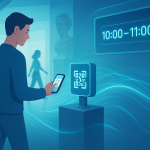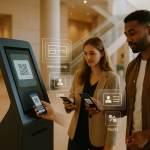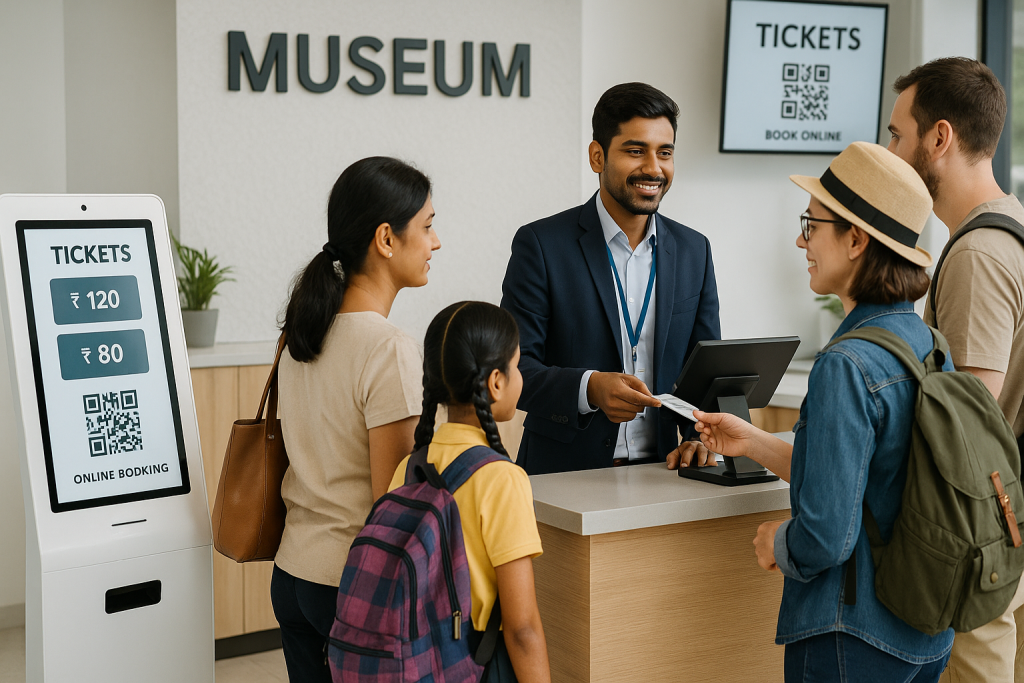QR ticket scanning is changing the way museums manage visitors. Instead of slow paper checks or manual counters, visitors scan and enter in seconds. It feels simple, but the impact is huge when you look at time saved.
You may wonder: Does QR scanning help all museums the same way? Or does size matter? That’s the question we answer here.
The truth is clear. Every museum benefits, but the bigger your visitor numbers, the more dramatic the savings. A small museum saves minutes. A large museum saves hours every single day.
This blog breaks it down by venue size. You will see how much time QR scanning saves in small, medium, and large museums. We also compare ROI and share when it makes the most sense to invest.
Let’s start with why QR scanning is now essential for modern museums.
Why is QR scanning important for museums today?
Visitor behavior has changed. People no longer want to stand in long queues or wait for paper tickets. They expect fast, contactless entry. QR scanning gives them exactly that.
When a visitor books online, they get a digital ticket with a QR code. At the museum gate, they scan it and walk in. No manual checks. No paper waste. No delays.
For your staff, this means less stress at entry points. They spend less time handling tickets and more time helping visitors inside. For management, QR scanning connects directly with your ticketing system. You get real-time data on visitor numbers, peak hours, and group check-ins.
The result? Smoother operations, happier visitors, and better control over your museum flow.
How much time do small museums save with QR scanning?
If your museum welcomes fewer than 200 visitors a day, you may think QR scanning is not worth it. The truth is, it still saves time, just on a smaller scale.
In a small museum, queues are usually short. But every visitor still takes time at the counter. Paper tickets, cash handling, or manual registers slow things down. With QR scanning, that step drops to a few seconds.
For staff, this means less time at the entry desk. A process that once needed two people can now run smoothly with one. That frees up staff to guide visitors, manage exhibitions, or handle school groups.
The ROI for small venues is not dramatic, but it is real. You save minutes each day, which add up over weeks and months. More importantly, you future-proof your operations as visitor numbers grow.
How does QR scanning help medium-sized museums manage visitors?
If your museum welcomes 200 to 1,000 visitors a day, QR scanning makes a big difference. At this scale, entry queues grow fast, especially during weekends or school trips.
Without QR scanning, each check-in can take 20 to 30 seconds. Multiply that by hundreds of visitors, and you lose hours at the gate. With QR scanning, the process drops to just a few seconds per person. The line moves faster, and visitors start their experience on a positive note.
Group check-ins also get easier. A busload of students can enter in minutes instead of waiting one by one. This keeps your entry area clear and avoids crowding.
For staff, the impact is huge. Instead of struggling with long lines, they can focus on helping visitors and managing events inside the museum. For management, the ROI becomes clear, you save both time and staff costs every day.
Why do large museums see the biggest ROI from QR scanning?

If your museum welcomes more than 1,000 visitors a day, QR scanning is not just useful, it’s essential. At this scale, every second counts.
Without QR scanning, queues grow fast and create bottlenecks. Visitors wait longer, staff get overwhelmed, and the entry area becomes crowded. With QR scanning, you cut entry time by more than half. Thousands of visitors move smoothly through your gates without delays.
The savings are exponential. If each check-in drops from 20 seconds to 5, you save 15 seconds per person. Multiply that by 5,000 visitors, and you gain more than 20 hours of staff time in a single day.
For large venues, this is where ROI shines. You reduce wait times, improve visitor satisfaction, and free staff to focus on service rather than ticket control. Simply put, the bigger the crowd, the bigger the return.
What is the ROI difference between small and large museums?
The return on investment (ROI) from QR scanning grows with your visitor numbers. Small museums save minutes. Large museums save hours. That difference changes how you run your venue.
Let’s compare:
- Small museums (under 200 visitors/day): Save minutes at entry. Staff can be reduced or reassigned. ROI is steady but modest.
- Medium museums (200–1,000 visitors/day): Save several hours each week. Queues shrink, school groups check in faster, and visitor flow improves. ROI becomes clear.
- Large museums (1,000+ visitors/day): Save hours every single day. Entry bottlenecks disappear, staff costs drop, and visitor experience improves instantly. ROI is strongest here.
The bigger your venue, the more powerful the payoff. For large museums and cultural centers, QR scanning quickly pays for itself and delivers lasting value.
What other benefits do museums get from QR ticket scanning?
Time savings are only part of the story. QR scanning also gives museums several long-term advantages.
First, it improves security. Each QR code is unique, which makes it harder to duplicate or misuse tickets. You get tighter control over admissions.
Second, it provides better data. Every scan records the exact time of entry. You see peak hours, visitor flow patterns, and group activity. This helps you plan staff schedules and design smoother visitor journeys.
Third, QR scanning scales with your events. During special exhibitions or festivals, you don’t need extra counters or long waits. The system handles higher traffic with ease.
Finally, it supports hybrid ticketing. Visitors can buy online, at kiosks, or at the counter — all linked to the same QR-based entry system. This flexibility keeps your operations smooth across all sales channels.
When should your museum invest in QR scanning?
The right time depends on your visitor numbers and your goals. A good rule of thumb is this: if you welcome more than 200 visitors a day, QR scanning delivers clear ROI. At that point, even small time savings per person add up to hours saved each week.
Smaller museums can still benefit. Even if queues are short, QR scanning reduces manual work and frees staff for other tasks. It also prepares you for future growth. When your visitor numbers rise, you won’t need to overhaul your system.
For large museums and cultural centers, the answer is simple. If you are not already using QR scanning, you are losing both time and money. The impact on staff efficiency and visitor satisfaction is too big to ignore.
Is QR scanning worth it for your museum?
Yes. QR scanning saves time for every museum, but the bigger your venue, the bigger the payoff. Small museums save minutes. Medium museums save hours each week. Large museums save hours every single day. The result is clear: shorter queues, lower staff costs, and happier visitors.
If your museum is growing or already manages large crowds, QR scanning is no longer optional, it’s essential. With the right system, you improve entry flow today and set yourself up for future growth.
Ready to see how QR scanning can transform your visitor experience? Talk to EveryTicket’s team today.
FAQs
Do small museums really need QR scanning?
Small museums don’t always face long queues, but QR scanning still helps. It reduces staff workload, cuts down paper use, and makes operations future-ready.
How much time can large museums save with QR scanning?
Large museums can cut entry time by 60–70%. For thousands of visitors each day, that means saving several staff hours and avoiding long bottlenecks.
Can QR scanning handle school groups and tours?
Yes. Entire groups can be scanned in minutes. Instead of checking in one by one, groups move smoothly together. This keeps your entry area clear and stress-free.
Is QR scanning difficult to set up?
No. Most modern ticketing systems, including EveryTicket, integrate QR scanning by default. Setup is quick, and staff training is simple.



